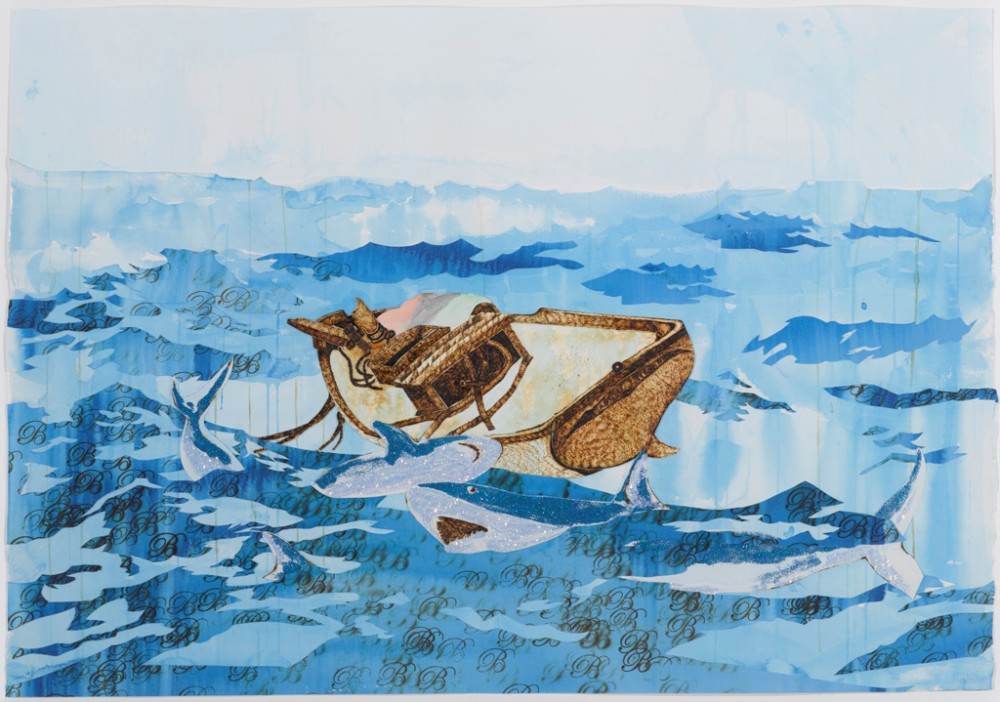The Gulf Stream (After Winslow Homer) (work of art)
Artwork Info
About
Stacy Lynn Waddell’s artwork tackles the complexities of African American identity, and our relationship to history and how it affects the present day. Waddell uses her signature technique—the burning, singeing, and branding of papers and fabric—to create unique mixed-media works. This specialized incineration process, which forms a sepia or black stain, allows golden, ghostly figures to emerge, dreamlike, through the surface of papers and canvases. When these images are combined with large-scale photo reproductions, the viewer is absorbed into an installation that is both familiar and strange, both spectral and ultra-realistic. The recent addition of glitter and rhinestones provides an extra element of glamour and glitz to an otherwise barren scene.
Recent works by Waddell have confronted notions of history and American colonialism and their continual scars, particularly in regard to members of the African and Caribbean diasporas. Frequently the artist employs imagery chosen for its symbolic nature: clipper ships, small boats, figures in 19th century dress or represented as Southern debutantes, and water, among others. Singed into Waddell’s supporting materials, these representations bring to mind turbulent episodes in American (or elsewhere) history: the slave trade and the Civil Rights movement of the 1960s are prime in the artist’s oeuvre. Waddell has confirmed that our own turbulent times, as we face an uncertain future filled with shifting social, political and artistic foundations, have caused her anxiety. As a result, she’s sought answers from other unsettled/unsettling times in the past, focusing her attentions, in particular, on the late Nineteenth Century. By emulating the works of artists from that time period, Waddell finds a new beginning, a new start, a clearer path to proceed through these unknown times. She is able to become, in her words, “an amalgamation of the 19th century naturalist, the archivist, the social documentarian, the architect and political scientist. This allows me to make images that are not only re-constructions, but re-visions of sites that highlight my interest in the relationship between space, light, water and the construction of ideals.” For this work, Waddell takes her inspiration from a beloved masterpiece in New York’s Metropolitan Museum of Art: The Gulf Stream by American master Winslow Homer. With this work, Waddell notes, she is making an “effort to appropriate the power invested in portraiture, cultural leitmotifs and the naturalistic vista. Each provides a fitting context for me to critique the contradictions and misunderstandings of culture and history that remain relevant.” The artist has not elaborated on her choices of Homer and Manet as inspirations of her own images, but her erasure of both figures is telling. While many of her earlier works address issues of race in a more overt way, Waddell indirectly does so here by removing Homer’s figure entirely. The viewer’s eye is thus drawn to the blank void of the floor of the boat, acknowledging a physical absence that reminds us of the historical neglect of African or African Americans.

